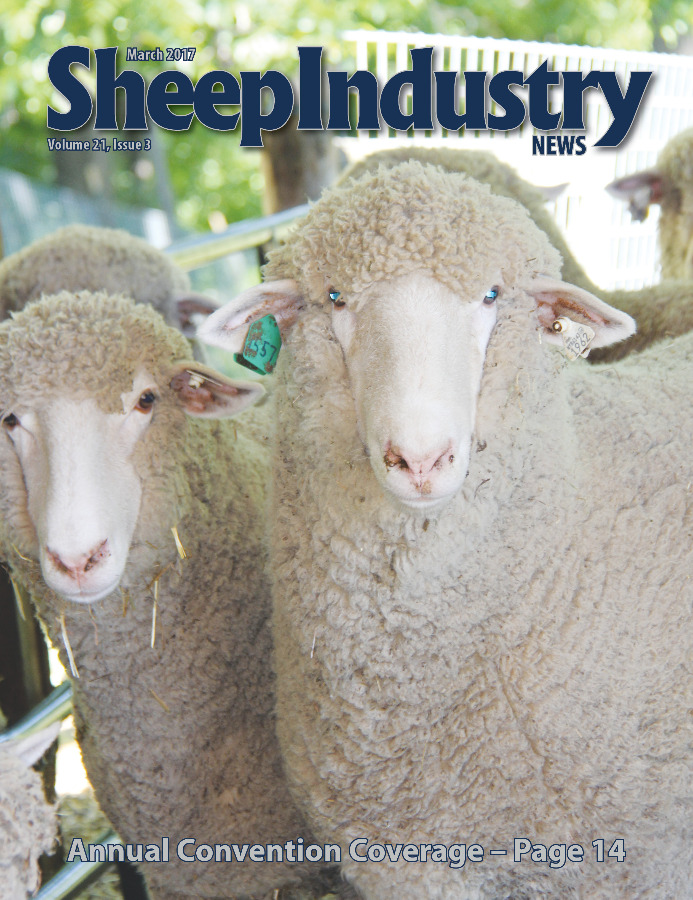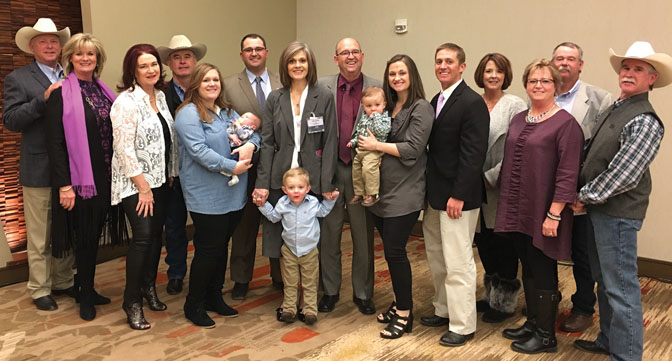
- March 2017
- President’s Notes
- Montana Sheep Conflicts Examined
- ASI Headed to Washington this Month
- Hahn Tops Shearing Field
- Convention: American Wool…Branded for the Future
- Convention: Branding American Wool
- Convention: Officers, Executive Board Elected
- Convention: Industry Veterans Honored
- Convention: Abiding by VFD Regulations
- Convention: States Share Highlights, Challenges
- Convention: Social Media Takes Center Stage
- Convention: FMD Focus of Animal Health
- Convention: WS Aerial Program a Priority
- Convention: Preparing for the New Farm Bill
- Convention: PERC Hears from Researchers
- Convention: EBVs Pay Off for Producers
- Convention: Lamb News is Encouraging
- Convention: The Fleece Awakens at MIWW
- Webinars Prove Informative
- Round 5 of Let’s Grow Grants Open
- Market Report
- The Last Word
To View the March 2017 Digital Issue — Click Here

Humbled to Lead This Great Industry
Mike Corn, ASI President
First, I must say that I am excited and humbled to serve this great industry. My biggest fear is not living up to the job or letting the industry down. One of my biggest short falls is being overly optimistic, but I can’t stand being around people that are always pessimistic or negative.
Those of us who are still in the industry – and have been for many years – are “die hards,” and we will do whatever it takes to stay in the sheep business. I am looking forward to the day when “Sheep Rule The Range” once again.
 I have to take a minute to thank everyone who is helping at home, so that I am able to fulfill this job. It was an awesome experience for me to have my best friends, my brothers and their wives, along with my children with us at the ASI Annual Convention. Of course, I also have to thank my bride of 33-plus years, Jennifer, as she is my rock and the reason we are where we are today. Thank you guys so much and I love each of you.
I have to take a minute to thank everyone who is helping at home, so that I am able to fulfill this job. It was an awesome experience for me to have my best friends, my brothers and their wives, along with my children with us at the ASI Annual Convention. Of course, I also have to thank my bride of 33-plus years, Jennifer, as she is my rock and the reason we are where we are today. Thank you guys so much and I love each of you.
As I am writing this column, we are busy putting together our new councils and committees that will play a huge role in what we accomplish in the next year. I am so thankful to everyone who is willing to volunteer their time to see this industry succeed. I sense that several issues that have been affecting us will be resolved – to our benefit – in the coming year or two. We must now press Washington, D.C., even harder to ensure our survival. The air in D.C. seems to have turned in our favor, and we must take advantage of the situation while we can.
Which leads me to discuss our Spring Legislative Trip, scheduled for March 27-29. ASI helps the state association delegations with travel expenses by covering the hotel room charge, so all you have to do is get there.
We won a vote in the U.S. House of Representatives last month with the congressional review act vote on the Bureau of Land Management planning rule. ASI listed this as one of its priorities in the December 2016 letter to the Trump administration, and Congress responded within weeks. Now, onto the Senate.
As you read in the February issue, we included a number of priorities from delisting two predator species from the Endangered Species Act to appropriately funding Wildlife Services’ livestock protection nationwide. The bighorn language we are seeking in Congress to protect ranch families from anti-livestock groups will be a topic on our Washington, D.C., trip again, as will be scrapie eradication funding through the U.S. Department of Agriculture’s Animal and Plant Health Inspection Service.
We plan to push hard on opening the Japanese market to American lamb, so we have another outlet for rack of lamb to white table cloth restaurants. The meeting will mark the first conversation between sheep producers and agriculture leaders in Congress on the Farm Bill, which is due in 2018. I encourage you and your state association to be part of that discussion, as well, since we include helpful programs for producers.
I close on a note about our national convention held in late January in Denver. A keynote address was provided by the Food and Drug Administration regarding the veterinary feed directive and the lamb industry. Meg Oeller, DVM, Ph.D., shared the path forward for sheep producers to utilize medicine with their veterinarian via feed/water. This presentation has prompted dozens of conversation nationwide among veterinarians, sheep producers and lamb feeders who are encouraged with the developments. Our read is the vet and pharmaceutical industries were not upbeat about options for smaller species, such as sheep, and are relieved that we do have realistic options.
Yet another example – in my view – of the value of a trade association watching out for our business’ interest.

